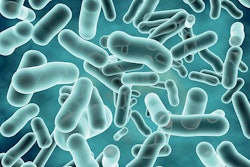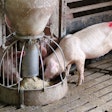
Study comparing 2 tannins in animal feed suggests compounds could hold multiple benefits
The hunt is on for an animal feed additive that will reduce enteric emissions from livestock. But a recent study comparing two promising tannins suggests these animal feed ingredients could come with additional consideration.
The European researchers behind the research aimed to compare the efficacy condense tannins derived from hazelnut husks, and the more commonly researched sainfoin. Their aim was to determine which of the pair resulted in the greatest reduction of emissions, with hope that the study would shed light on why some tannins show wide variability in their performance in other trials.
Instead, they realized both sources performed reasonably well — and could be suited to use under different circumstances.
Sainfoin, already the subject of several other promising studies, was more effective at reducing emissions, according to Vincent Niderkorn, a research scientist at Clermont Auvergne University and the lead author on the paper, published in Animal Feed Science and Technology. But the hazelnut pericarps — fruit matter that surrounds the nut and is essentially a waste product—had a similar effect on emissions, and could have other benefits besides.
“Although the hazelnut pericarps were less efficient to reduce protein degradation,” Niderkorn said, “I was pleasantly surprised to observe that some agrioindustrial byproducts have the potential to reduce pollutant emissions by ruminants, instead of being only waste.”
Most tannins research has focused primarily on identifying the most effective means of reducing enteric emissions, particularly because different sources of condensed tannins have shown wide variability in scientific trials. This is thought to be tied to the variable doses available in natural tannins sources, Niderkorn said, but some research has argued that it could be tied to the different characteristics of the tannins themselves.
But the results of this study, he said, suggest there could be more to consider beyond the efficacy of any particular tannin.
In this particular comparison, Niderkorn said, either sainfoin or hazelnut could prove useful in reducing emissions under different circumstances. Sainfoin, for example, is a legume species that does not require nitrogen fertilization and also offers a good amount of protein. On the other hand, using hazelnut pericarps in animal feed could put what otherwise amounts to a waste product to good use, thereby reducing industrial waste.
Either way, Niderkorn said, more research is needed to determine the acceptability and performance of tannins in multiple animal species and under diverse production conditions.
















